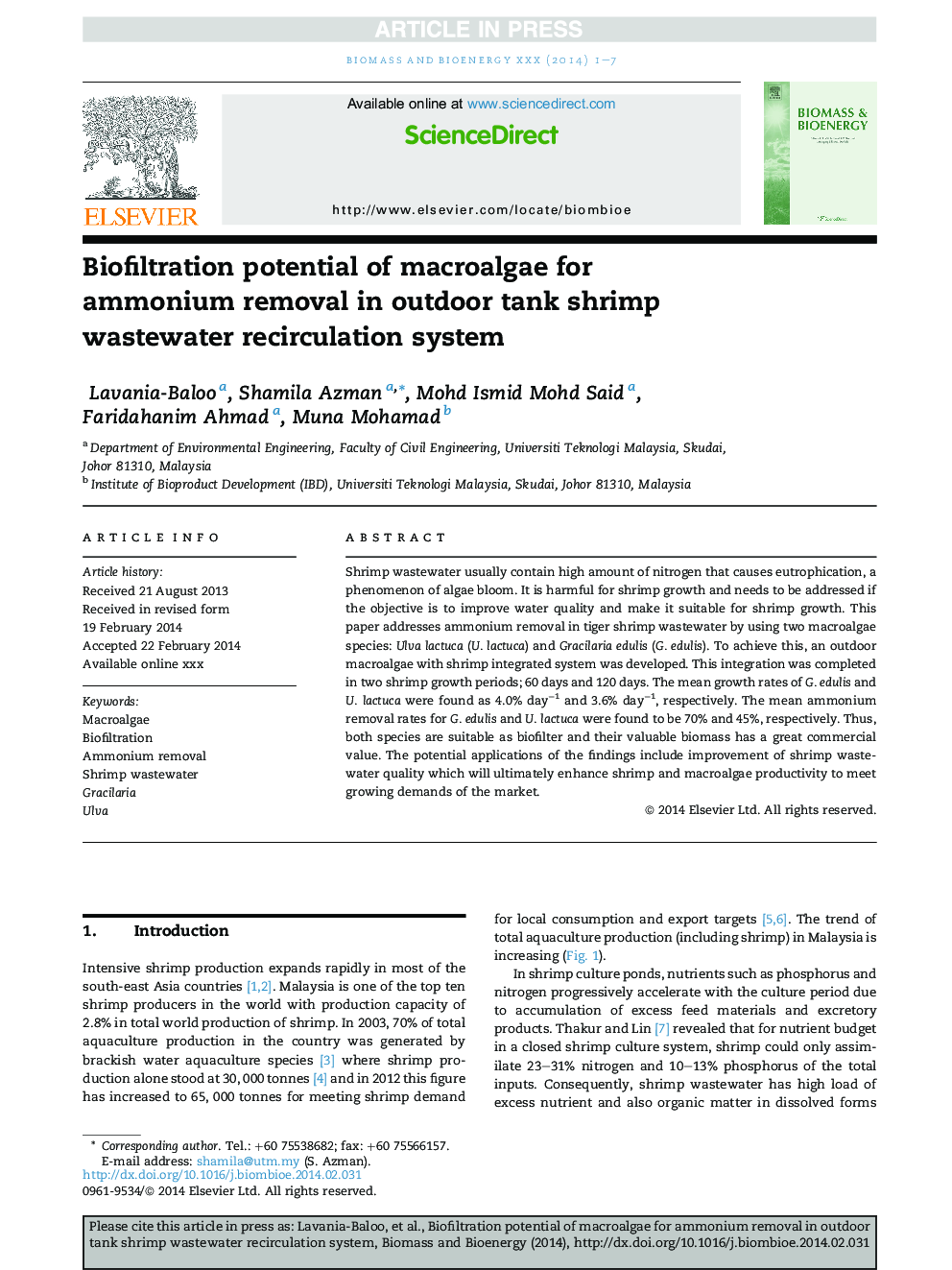| Article ID | Journal | Published Year | Pages | File Type |
|---|---|---|---|---|
| 7064680 | Biomass and Bioenergy | 2014 | 7 Pages |
Abstract
Shrimp wastewater usually contain high amount of nitrogen that causes eutrophication, a phenomenon of algae bloom. It is harmful for shrimp growth and needs to be addressed if the objective is to improve water quality and make it suitable for shrimp growth. This paper addresses ammonium removal in tiger shrimp wastewater by using two macroalgae species: Ulva lactuca (U. lactuca) and Gracilaria edulis (G. edulis). To achieve this, an outdoor macroalgae with shrimp integrated system was developed. This integration was completed in two shrimp growth periods; 60 days and 120 days. The mean growth rates of G. edulis and U. lactuca were found as 4.0%Â dayâ1 and 3.6%Â dayâ1, respectively. The mean ammonium removal rates for G. edulis and U. lactuca were found to be 70% and 45%, respectively. Thus, both species are suitable as biofilter and their valuable biomass has a great commercial value. The potential applications of the findings include improvement of shrimp wastewater quality which will ultimately enhance shrimp and macroalgae productivity to meet growing demands of the market.
Related Topics
Physical Sciences and Engineering
Chemical Engineering
Process Chemistry and Technology
Authors
Lavania-Baloo Lavania-Baloo, Shamila Azman, Mohd Ismid Mohd Said, Faridahanim Ahmad, Muna Mohamad,
